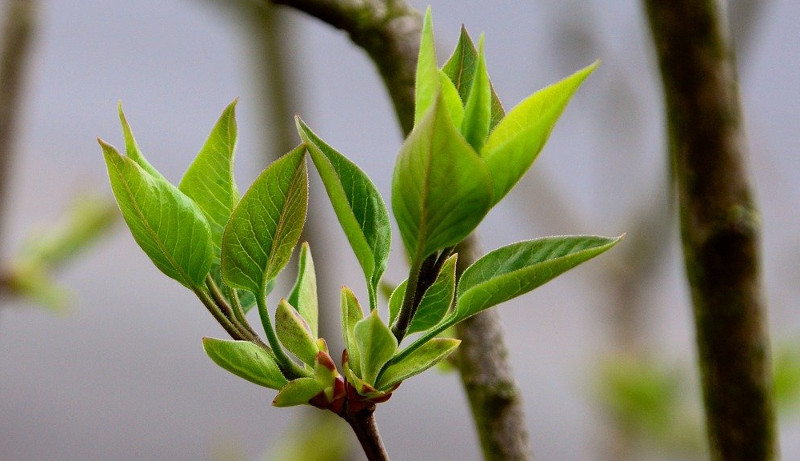The common purple lilac (Syringa vulgaris) is one of the most popular fragrant multi blooming shrubs. This plant thrives in USDA growing zones 3 through 7. Lilacs are hardy shrubs, meaning that they need very little care to survive. They can withstand temperatures of -40 degrees Fahrenheit (-40 C) but may need some protection from icy winds that damage the flower buds.

To help flower production, lilacs need cold winters to help set next season’s blooms. During the cold season, while the shrub is dormant, not much maintenance is needed. The main concern for lilacs during the winter is dehydration caused by frozen ground and dry winter winds. Well draining soil helps to prevent frozen water from damaging the roots.
Protecting Lilacs In Winter
Think about winter weather as you decide where to plant your lilac shrub. This plant needs at least 8 hours of sunshine and alkaline to neutral soil to be healthy. Avoid planting them against a light colored building or wall. The reflection can cause winter burn. To help prevent winter heave (exposure of roots due to the ground freezing and thawing), cover the base of the plant with 3 to 4 inches of mulch.
During late winter or early spring, if a harsh freeze comes along, you may need to cover your shrub to protect the new buds. You can use a blanket, plastic tent, or burlap.
Cutting Back Lilacs For Winter
Regular pruning of lilacs helps to produce more blooms in the spring. Good pruning practices also help the plants handle a hard winter beautifully. Wait until the plant has finished it’s spring blooming before you cut off the dead flowers. Cut out any damaged or diseased stems. Thin the suckers by one-third for complete rejuvenation of older plants. Pruning can be an important step to lilac recovery if winter damage has occurred.
Lilac Winter Care in Pots
Syringa vulgaris, the common lilac, is a hardy shrub that can withstand cold winter temperatures. Winter damage can occur if the roots are left above ground without protection. If your lilac is growing in a container, it is best that you do not bring the plant inside for the winter. Lilacs need the cold to set buds for the next spring’s flowers. Room temperature will bring the plant out of dormancy too soon.
You can ensure winter survival a few ways. Once the container shrub has gone dormant in the fall, store the lilac in an unheated garage or shed for the winter and check the moisture level to be sure the plant does not dry out.
Another option is to bury the pot in the ground or heavily mulch the entire pot. This protects the roots from freezing and will still give the tops of the lilac the chill they need to produce flowers. We recommend using resin plastic, cement, metal or wooden planters for growing zones that have freezing temperatures during the winter.
Watering Lilacs in Winter
Before the cold weather season sets in, give your shrub a good watering (2 to 3 gallons) before the ground freezes. You will want the lilac well hydrated before winter starts.
Lilacs can withstand cold weather better than most plants. They need very little care during this time. They will benefit from an occasional watering from time to time. Do this on a day that is warmer, where night time temperatures will stay above freezing. Watering around the root area actually keeps the soil warmer than dry soil. If your shrub is in a container, water it occasionally so the soil does not completely dry out.
Growing Lilacs Indoors
The common lilac will not thrive if brought inside for the winter. The shrub needs the cold temperatures to help set the buds for next spring’s flowers. If your winters are harsh, protect your lilac from the winter cold either by burying it in the ground, heavily mulching around the pot, or storing your container shrub in a cold garage or shed.
Lilacs Winter Care Tips
Give your lilac a good watering to ensure the shrub is hydrated before winter starts.
- Use 3 to 4 inches of organic mulch around the base of your lilac to prevent winter heave, the exposure of roots due to the ground freezing and thawing.
- Deadhead and prune the plant in late spring.
- Occasionally water to keep the soil warmer.
 |
Author Chris Link - Published 12-16-2020 |
